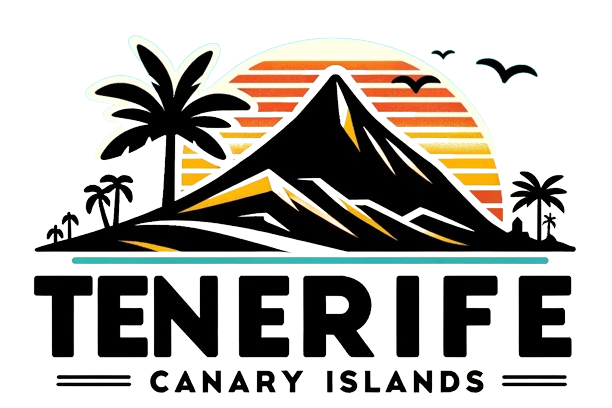The Canary Islands Health Service (SCS), or Servicio Canario de la Salud, stands as the backbone of public healthcare across the archipelago, delivering universal access to high-quality medical services for residents, workers, and visitors alike. As an autonomous body under the Canary Islands Government’s Ministry of Health, the SCS ensures equitable care amid Tenerife’s bustling tourism scene and diverse island needs. In 2025, with innovations like AI-driven diagnostics and expanded telemedicine, the SCS is not just responding to post-pandemic demands but pioneering sustainable, patient-centered health solutions. Whether you’re a hiker in Anaga’s forests needing urgent care or a sun-seeker exploring Teide’s trails, this guide demystifies the SCS structure, services, and tips to stay healthy in paradise—empowering you to focus on Tenerife’s endless adventures.
The Foundations of SCS: History, Structure, and Mission
Established by Law 11/1994 on the Canary Islands Health Organization, the SCS has evolved into a comprehensive public entity dedicated to promoting health, preventing disease, and providing safe, trustworthy treatment. Its mission? To enhance the well-being of over 2.2 million islanders—and millions of annual visitors—through integrated services that prioritize accessibility and innovation. Headquartered in Santa Cruz de Tenerife, the SCS operates under the Directorate General, encompassing key areas like Public Health, Mental Health and Addictions, Patient and Chronicity Services, and island-specific management for Tenerife, Gran Canaria, and beyond.
Organizationally, it’s a well-oiled machine: The Secretaría General oversees administration, while specialized units like the Servicio de Evaluación y Planificación del SCS (SESCS)—founded in 1995—drive evidence-based decisions through multidisciplinary teams of economists, epidemiologists, psychologists, and more. As part of Spain’s National Health System, the SCS collaborates with EU networks like EUnetHTA for health technology assessments, ensuring cutting-edge practices reach remote outposts like El Hierro or La Gomera. Funded partly by European Regional Development Funds (ERDF), including €484.1 million for outermost region challenges, the SCS tackles geographic hurdles with resilience, mirroring Tenerife’s volcanic spirit.
Core Services: From Primary Care to Specialized Treatments
The SCS’s tiered system ensures seamless care, starting with primary health centers (Centros de Salud or CS) that handle 80% of everyday needs—from routine check-ups to vaccinations. In Tenerife, find over 100 centers via the SCS’s interactive map, searchable by island and type (CS for health centers, H for hospitals). For emergencies, the SUC (Servicio de Urgencias Canarias) dispatches ambulances island-wide, with teleassistance proving lifesaving, as in two 2025 births facilitated remotely in Lanzarote and Tenerife.
Hospitals form the next level: Tenerife boasts the Hospital Universitario de Canarias (HUC) in La Laguna—a 2,534-staff powerhouse affiliated with Universidad de La Laguna for teaching and research—and the Hospital Universitario Nuestra Señora de Candelaria (HUNSC) in Santa Cruz, a national referral for specialties like cardiology. Specialized services shine in oncology, where 2025 expansions include a cytostatic room at Hospital del Norte in Icod de los Vinos, backed by €1.6 million from Cabildo de Tenerife and SCS collaboration—slashing 140,000 annual patient trips to HUC and easing TF-5 traffic. Palliative care has grown too, with home-based extensions in Tenerife aligning with the +AP Primary Care Strategy and Humanization Plan.
Mental health gets robust support via the Dirección General de Salud Mental y Adicciones, funding projects like “Incluye sin límites”—basketball workshops for youth with diverse abilities, closing its 2025 season in Santa Cruz. Rare diseases, affecting 82,000 Canarians, benefit from the 2022-2026 Strategy, yielding faster diagnoses and support, as highlighted at a 2025 FEDER conference in Gran Canaria. Digital tools amplify access: The miSCS app streamlines administrative tasks like appointments and records, while the unified medical history viewer boosts efficiency across centers.
2025 Innovations: Digital Transformation and Sustainability at the Forefront
This year marks a leap for SCS, fueled by Next Generation EU funds under REACT-EU’s Priority Axis 20—targeting COVID recovery with green, digital resilience. Key wins include AI applications in personalized medicine: Algorithms now aid treatment selection and novel diagnoses at the Instituto de Salud Research of the Canary Islands, with “Retinography Bots” exemplifying homegrown tech. Telemedicine surges, enabling remote consultations that bridge islands and support medical tourism, like San Roque Hospitals’ 2025 pact with Mauritania for training, evacuations, and virtual care—positioning Canaries as an African-European health bridge.
Sustainability threads through: ERDF investments enhance infrastructure for basic services, while initiatives like Surfing With Me (via Cabildo) repurpose beach waste into awareness tools. The SCS’s fusion with the Instituto Canario de Hemodonación y Hemoterapia via Decree 214/2024 creates a unified transfusion committee, streamlining blood services. Amid tourism’s 2025 record highs—1.75 million Q3 visitors to Tenerife—the SCS balances influx with eco-health measures, from volcano ash impact studies to caregiver support projects earning national nods.
Navigating SCS as a Visitor or Resident: Practical Tips for Tenerife
Accessing care is straightforward: EU/EEA citizens use the European Health Insurance Card (EHIC) for free/urgent services; non-EU visitors should secure travel insurance covering repatriation. Register at a local CS with your ID or passport—English-speaking staff abound in tourist hubs like Adeje or Puerto de la Cruz. For prescriptions, pharmacies (farmacias) are ubiquitous; the miSCS app locates them and handles e-prescriptions.
In Tenerife, emergencies dial 112 for SUC response; non-urgents book via 902 01 11 12 or the app. Tourists in the south tap HUNSC expansions, including a new Early Attention Unit for pediatric developmental care—launched July 2025, one of 11 SCS-wide. Wellness seekers: Embrace “recovery in the sun” with SCS-backed thalassotherapy or hikes promoting mental health, but pack sun cream—UV alerts via SCS apps prevent heat-related woes.
Pro tip: Download miSCS for real-time wait times; pair with Cabildo’s REGENERATe for eco-volunteering that doubles as stress relief. With waiting lists at 18,046 for social health spots, the Cabildo’s €4 million infrastructure push (e.g., Añaza and La Orotava centers) signals collaborative progress.
The SCS isn’t just healthcare—it’s Tenerife’s quiet guardian, blending innovation with island warmth to keep your Canary escape worry-free. As Director Carlos Gustavo Díaz notes, these strides “increase productivity and reduce errors,” ensuring the archipelago’s eternal spring includes thriving health for all.
